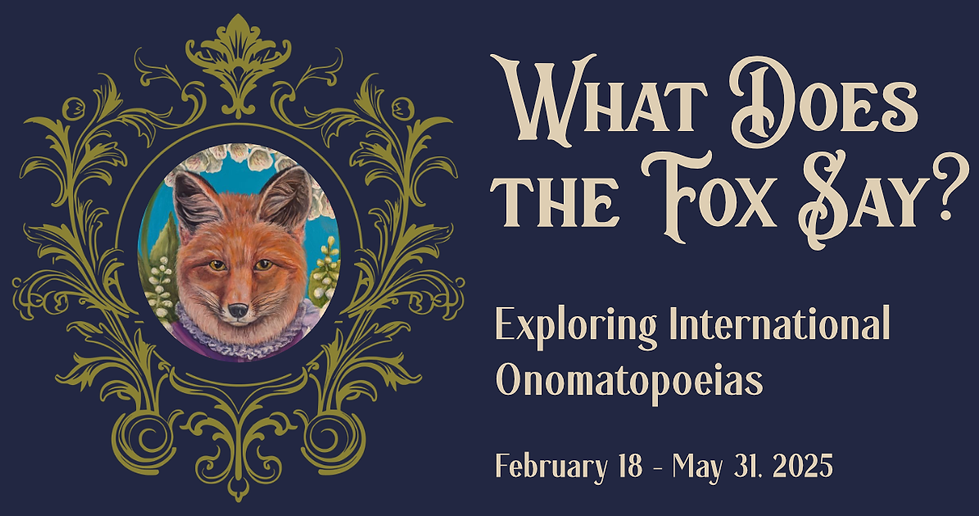


Current Visiting Exhibits:

Step into the world of sounds with our interactive exhibit, What Does the Fox Say? Exploring International Onomatopoeias. This fun and educational exhibit explores the fascinating world of onomatopoeia—words that imitate the sounds they describe. From “meow” to “woof” and “cock-a-doodle-doo,” onomatopoeic words bring animal sounds to life. But did you know that different cultures have different words for the same animal sounds? In Germany, a rooster goes “kikeriki,” while in Spain, he says “quiquiriquí.”
Designed for visitors of all ages, this exhibit offers a hands-on experience for preschoolers and anyone curious about how language shapes the way we hear the world. Explore how animals sound in various languages, discover the origins of these unique words, and even test your skills by matching animal sounds to the right words.
Whether you're a language lover, a curious child, or someone fascinated by the playful side of language, What Does the Fox Say? Exploring International Onomatopoeias invites you to listen, learn, and have fun exploring the sounds of the world around us.
"What Does the Fox Say?" was created in partnership by Independence, Oregon artist, Torin Widhammer and Natascha Adams, former Director of the Heritage Museum.

Albert Clinton Moore Collection
August 2024 - Summer 2025
Step back in time with the Albert Clinton and Rose Olive Moore Collection at the Heritage Museum. This collection is a treasured donation from Elizabeth Callahan and Rosemary Carlsen, granddaughters of Albert and Rose Moore.
Through the lens of Albert Moore's photography, you can view life in early twentieth-century. Moore skillfully captured tender family moments shared between himself, Rose, and their children, Ramona and Dan. As Mayor and a successful Main Street entrepreneur, Moore played a vital role in Independence history. This legacy of civic engagement extended to his daughter Ramona, who supported and contributed to the Heritage Museum during her life.
The items on display include Rose Moore’s elegant 1904 wedding dress, mercantile goods from Moore’s store, and personal effects spanning the 1900s to the 1930s. Each artifact tells a part of the Independence story, including education, economic trade, social connections, and enduring family bonds.
Immerse yourself in the genuine moments preserved within the Albert Clinton and Rose Olive Moore Collection.
Upcoming Visiting Exhibit:

A people without the knowledge of their past history, origin, and culture is like a tree without roots.
- Marcus Garvey

